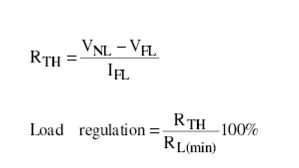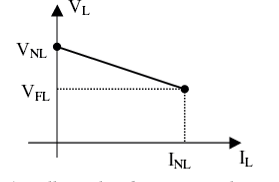What is Load Regulation?
Load regulation is the measure of the ability of a power supply to maintain a constant output voltage despite changes in output current or load. A good load regulation ensures that the power supply will deliver a required and stable voltage to the circuit or system. Ideally the load regulation should be zero meaning that the supply’s output voltage is independent of the load and remains the same throughout.
When choosing a power supply, it is important to pay attention to the load regulation as specified in the data sheets. The power supply should be able to supply a constant and reliable power to within the specified load current range. The load regulation is not a fixed number but rather presented as a percentage.
Load regulation = formula
Where VNL is the load voltage at no load IL = 0
VFL is lad voltage at full load when IL= IL max
There several methods of determining the load regulation of a power supply, the simplest one is to use resistors that present the minimum load, the maximum load and the nominal load to the power supply. The nominal load, being half the power supply maximum current. The resistor loads are connected one at a time and measurements taken for the respective output voltage.
Another method is to use a programmable electronic load which offers an easier way to observe the load regulation over the entire load current range of the supply.
The test load should be within the ratings of the power supply and be able to handle the full output power from the supply.
Load regulation can be achieved using various methods based on the level of regulation required. A zener diode is a simple method that maintains a constant voltage. Higher load regulating circuits use integrated circuits and a negative feedback configuration. The output is monitored and compared against a preset value. A feedback circuit and control circuits are then used to alter the switching devices such that the output remains constant regardless of changes in the load current.
The load regulation depends on the output resistance of the supply and a low resistance results into a low regulation as shown from the relationship below.

Where :
- RTH is the output resistance of the supply,
- IFL the full load current (at the minimum resistance)
- RL(min) the minimum load resistance
A power supply with good load regulation is able to provide an output voltage that does not change much with varying load current. The smaller the load regulation, the stable and reliable is the power supply. Typical well-regulated power supplies have load regulations of less than 1%, meaning that the output voltage will change by a maximum of 1% over the supply’s load current range.
The well regulated power is desired to ensure that the circuit components operate properly otherwise the fluctuations may cause malfunctions of the circuit operation or damage to the components. The switched mode power supplies have better regulation due to the circuit design as compared to the linear supplies.

